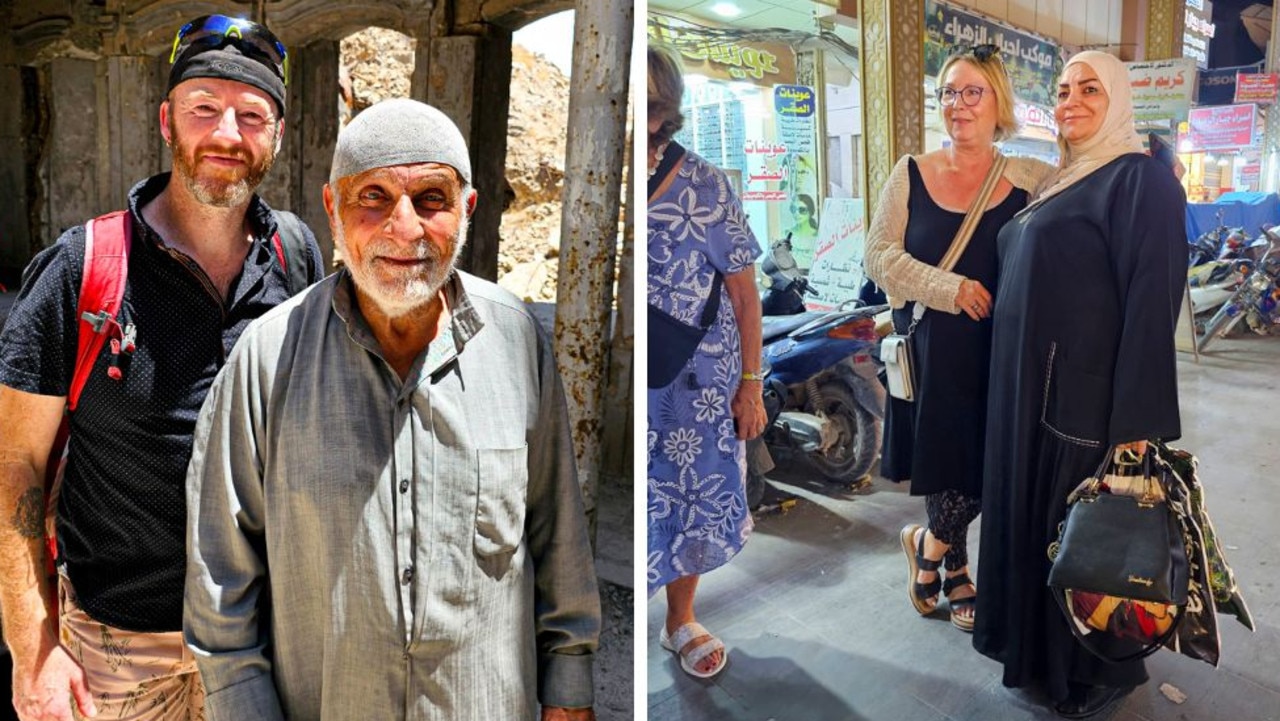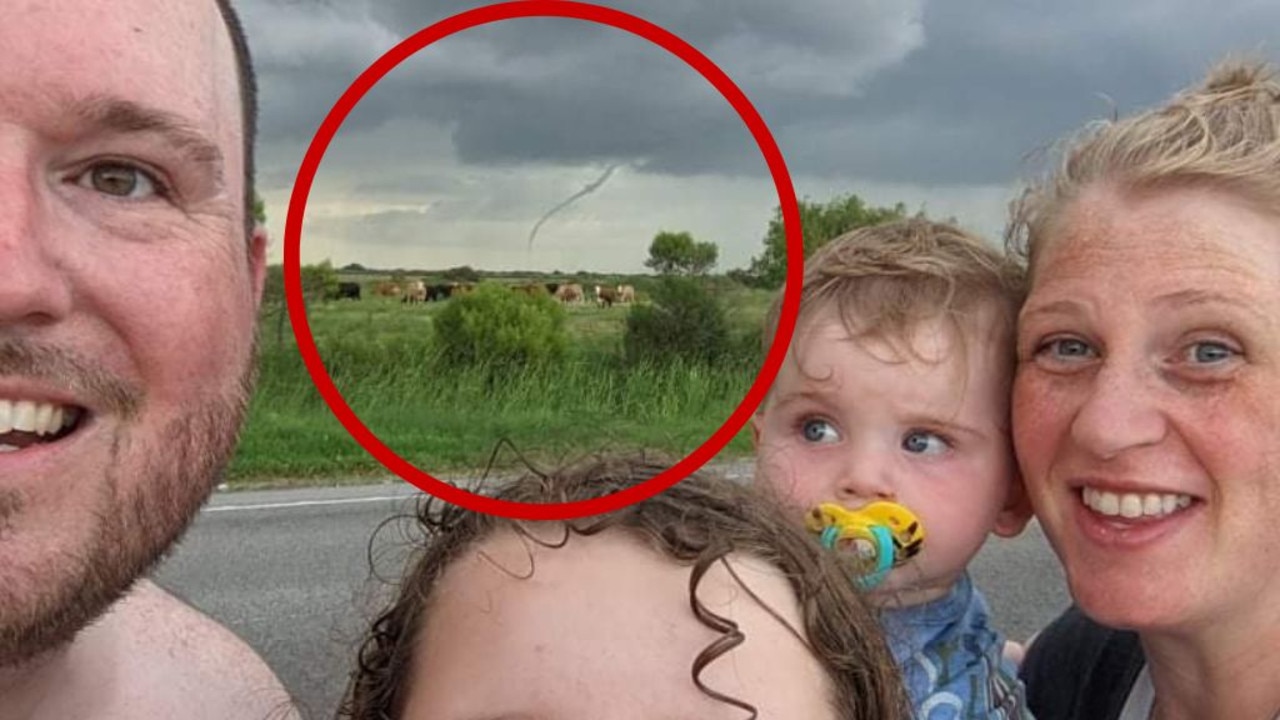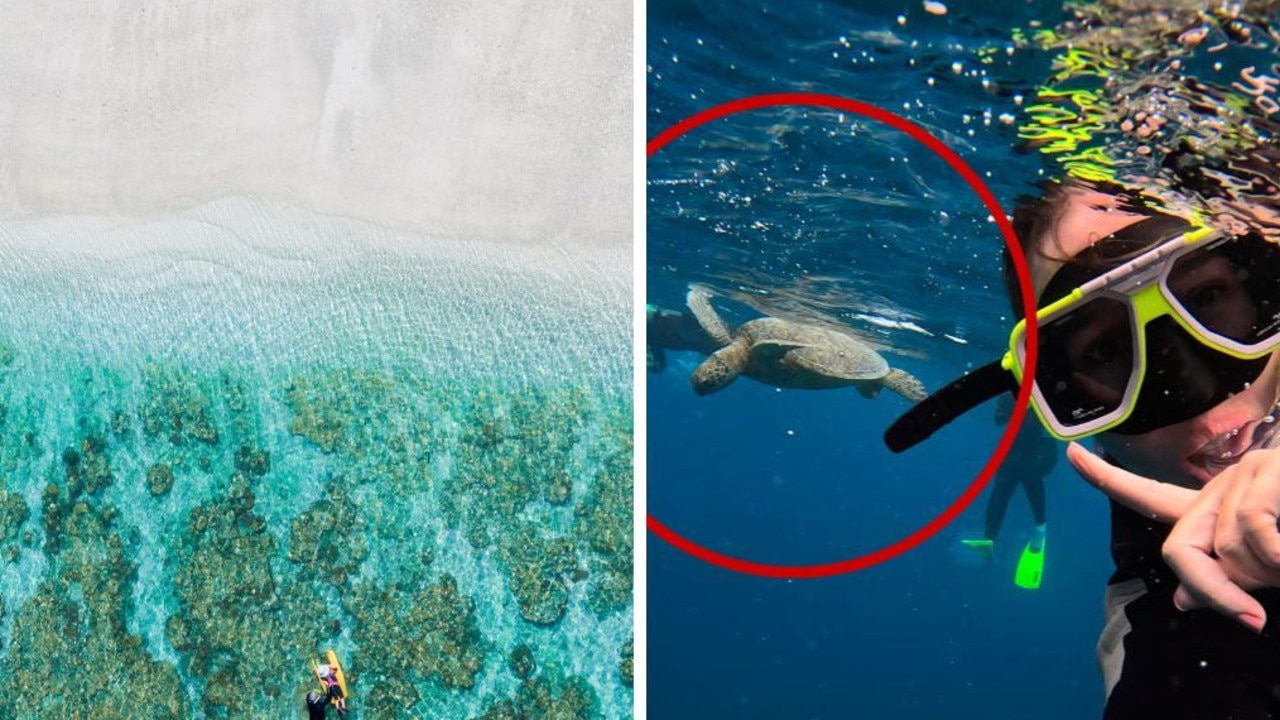Saddle up for bush camel safari
EXPLORING the rugged Flinders Ranges from the back of a camel can be rough, but very rewarding, writes Carolyne Jasinski.
IT'S 5.30am and as daylight creeps slowly over the cliff top, nature's alarm clock is winding up. The sun lights the sky and the birds begin their morning concerto. Then the harsh clang of camp ovens breaks the sweet serenade and sounds the start of another day.
It's tempting to reach for a snooze button but there is no switching off nature – or our guide, Rex Ellis.
"Everybody up," he shouts.
Silence.
"Come on, cobs," he says chuckling under his breath. "Do you think you're on holiday or something?"
Not any more.
We're on a bush safari – a camel trek through the ancient Flinders Ranges, one of the world's great desert mountain ranges. Along for the ride are a bunch of characters. Monty, for example, is learning the ropes to lead the way. He is truly handsome; his beautiful big eyes framed with the longest eyelashes. He'll do anything for food, even crawl along, combat-style, to share your lunch then drop his boofy head into your lap for a smooch.
Crow, who has been temporarily demoted, is a bit miffed at being back in line and having to carry a pack. Big Jacko, another blond, handsome devil, is strong and reliable but a big softie. He needs at least one cuddle at night to get him to co-operate. Top Shot, as he likes to be known, is the bad boy on board. Young, rebellious and with a temper that often gets him into trouble. Then there's Mishna, the party girl with pretty hair and a reputation for leading the boys on.
... and that's just the camels.
There are nine in total, plus 11 people and two dogs taking a remarkable roller-coaster ride – outback-style – over 140km of some of the state's roughest, rolling country in eight days.
This is not your average tour and it's not a holiday in the usual sense of the word. More an experience.
As we crawl out of our warm swags into the crisp morning air, we start the morning ritual. First thing is to coach Bigger and Billycan – the two Jack Russell terriers – out from the bottom of our sleeping bags. They know where to secure a warm bed with a sympathetic camper each night.
Beanies are tugged a little further over our ears and clothes are layered on to help fight the morning's abrupt assault. Water is rationed, since we have to carry everything with us, so washing is a rather indelicate affair, achieved with wet wipes. Then it's time to get to work; packing gear, rolling swags, downing a quick breakfast and reloading the saddle bags.
Ever-patient Len, a horseman when he's at home in Jamestown, is along to help Rex. He's already with the camels out in the bush, undoing hobbles and fixing nose lines to lead ropes, so we can bring them back to camp. We lead them in, gently pull on the rope and "hoosh" them down ready to be saddled.
With each passing day, we gain more confidence around the camels, along with a growing respect for what they can do – both good and bad.
Strong and tall, they are making our journey possible, carrying our entire camp from one scenic spot to the next.
But camels also have a bad reputation for being smelly, cantankerous creatures that spit and kick. For the record, they can kick out at 90 degrees – with any leg – and they can regurgitate an enormous amount of food at an alarming speed – but only if scared or hurt. Just don't stand in front of a camel if it's feeling threatened.
As for the smell? They do pong a bit but after a week in the bush with no shower, we are probably not the ones to judge.
At times, the camels are just like pets (very big ones), each with a distinct personality.
We learn how to judge their moods. A good night's feed will have a few of them dropping their heads on your shoulder for a cuddle. But a night of lean pickings and they'll be testy in the morning. A deep, throaty gurgle generally means "leave me alone".
Once the camels are hooshed down in a row, blankets are laid over their humps and saddles lifted on. Next come bags, swags, food, water and any other paraphernalia needed to keep us going for eight days in the bush.
There is an art and an order to all of this. One which, Rex says, we are yet to master. Three hours later – and remember it's only 8.30am – we're ready to move out. I could do with another coffee around about now.
"Ibna, ib, ib, ibna", sounds around the camp and our adventure lurches into action.
Len, Rex and Patti (his wife and camp cook) lead the way. There are four riders and four walkers following the camel train.
Our north-bound trek, which started in Blinman, has taken us to the heart of the Flinders Ranges, through station country that is otherwise inaccessible to tourists.
We are explorers, getting a taste of what early pioneer life would have been like.
Like the song says, "Ain't no mountain high enough, ain't no valley low enough, ain't no river wide enough" (ain't no rivers at all at the moment) to keep us from our goal.
With each hill that is climbed or rocky creek bed conquered, with every cross-country jaunt or station track followed, the landscape changes. Wide, open plains and rocky hills with barely a bush lead into rugged gorges and craggy cliff faces where optimistic trees cling to a precarious existence.
We take refuge in the odd hidden green valley fed by underground springs then head on again over steep, shale-covered slopes with evidence of the most unlikely bullock trails.
We weave through native pine forests and thick acacia scrub and through gum-lined creek beds left thirsty for many years.
Our trek passes the old copper mine and ruins at Nuccaleena. On day four, we camp on Waraweena Conservation Park where 'Stoney' collects us for a welcome shower (albeit cold) at the shearers' quarters.
We head past Mt Hack, through Patawarta Gap and on to Mt Patawarta. Then it's on to Nildottie Spring and Artimore ruins and south again towards Blinman.
It's tough country. Dry and dusty, and rough to walk over. Almost every step involves treading on or over rocks or shale or sinking in creek gravel or climbing boulders made smooth by flooding creeks in wetter times. But there is a real beauty in its harshness. No wonder international tourists rave about this country we tend to take for granted.
Now if you think it all sounds like hard work, you're right. This is no walk in the park. We average 15km-20km a day, depending on the terrain and the time and strength needed to cross it. And although the camels carry the loads, they don't do all the work. We ride for an hour then walk for an hour. The mix is perfect. After an hour in the saddle, you're ready to stretch your legs, but after 60 minutes of trekking you're ready to ride.
At the end of a hard day, we've earned a sit-down. But there's still more work to be done. This is the make-or-break point. Our group, which ranges in age from 13 to 70, has had it". But tired muscles and weary bones are pushed that little bit further.
The camels have to be unloaded and hobbled for a few hours of free roaming and feeding before anyone thinks of relaxing. Shepherds have to make sure the camels don't wander too far. Then the camp needs setting up; firewood gathered and lit and strategic spots found for our swags.
And by this stage, Rex is a little grumpy. A torn shoulder ligament will do that to you. In fact, it will put most people in hospital for an operation, but Rex is not like most people. He soldiers on, shaking his head in despair as we girls have another giggling fit about unhooking the cruppers from under the camels' tails.
We're not taking his grumbling too seriously at all. Maybe tomorrow we'll get it right.
When we finally sit, it's bliss. The bright blue sky darkens into a star-studded night and while Patti whips up bush tucker, we listen to the crackle of the fire and talk about what we've done and what's still to come.
There are all sorts of reasons for taking on an adventure such as this. Long-time friends Pat, Rae and Marcia wanted a challenge. I think they got more than they bargained for. They have laughed their way through some great times and some hard moments. I wanted a family holiday we would all remember. Something out of the ordinary.
The journey is harder than any of us expected but, as Dot, our oldest trekker, says, "It's also much more rewarding".
Young Michael, 13, is in his element. He loves the camels and everything about this bush adventure. At 15, Daniel's idea of a holiday is usually sleeping in and a few movies, so the safari is a bit of a culture shock. But he's going along with the change and having a few laughs with (and at) his dad, Rick. Now Rick tells things exactly as they are. It's not his idea of a holiday. And that's OK. Horses for courses ... or camels in this case. A few days to taste the experience would have been enough for him.
But there is no doubting that we are all smugly satisfied. The sense of achievement is palpable. Now I can say I've really seen the Flinders Ranges. I've been over them, around them and through the middle of them.
And I was right about one thing – we will never forget it.



